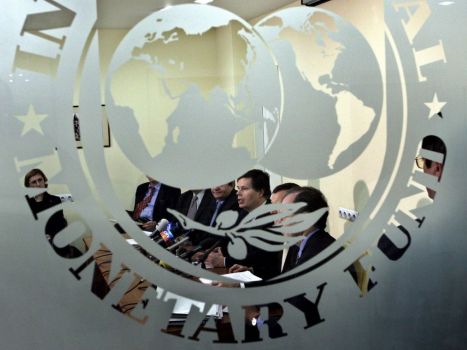DUSHANBE, October 4, 2012, Asia-Plus -- A new study by the International Monetary Fund (IMF) concludes that countries struggling with high public debt must combine policies that support economic growth with lasting changes in government spending and taxation,.
A chapter in the IMF’s World Economic Outlook notes that public debt has surpassed 100 percent of GDP in Japan, the United States, and several European countries in recent years. This is especially worrying because of the low growth, persistent budget deficits, and looming liabilities due to aging populations in these countries. A result, particularly in Europe, has been ratings downgrades and higher borrowing costs.
The study notes that there is widespread debate about the best way to reduce public debt. Some advocate strict budgets or fiscal austerity; others, reinvigorating growth through spending, or fiscal stimulus; and still others cite the successful post–World War II U.S. strategy of “financial repression”—governments channeling funds to themselves.
The report offers three lessons for today, after close examination of six case studies of advanced economies in which public debt exceeded the threshold of 100 percent of GDP, spanning a century of experience. The cases—the United Kingdom (1918), the United States (1946), Belgium (1983), Canada (1995), Italy (1992), and Japan (1997)—cover the two postwar eras and the most recent era of peacetime debt buildup.
Lesson 1: Fiscal consolidation must be complemented by policy measures that support growth. Lesson 2: Debt reduction is larger and more lasting when fiscal measures are permanent. Lesson 3: Fiscal repair and debt reduction take time.
We will recall that Tajikistan’s external debt has grown 47.75 million U.S. dollars overt the first six months of this year, reaching 2.1273 billion U.S. dollars, which was equal to 29.7 percent of Tajikistan’s gross domestic product (GDP).
As of July 1, 2012, the external debt included the government’s direct debt estimated at 940.53 million, the debt of the National Bank of Tajikistan estimated at US$140 million, borrowings guaranteed by the government and debts without government guarantee. Long-term preferential loans from international financial institutions reportedly form the bulk of the country’s external debt. Tajikistan’s main creditors now included the Export-Import Bank of China (China Exim Bank) – US$878 million, the World Bank – US$371.27, the Asian Development Bank (ADB) – US$333.02 million, and the Islamic Development Bank (IsDB) – US$103.58 million. Over the first six months of this year, the national budget has earmarked 32.27 million U.S. dollars for repayment of the principal debt and 15.27 million U.S. dollars for repayment of the debt interests.








Green and resilient urbanization key for quality growth in Tajikistan, says ADB
President Emomali Rahmon meets with Vatican’s Secretary of State, Cardinal Pietro Parolin
President Emomali Rahmon meets with Pontiff
Only twenty-eight acquittals passed in Tajikistan over the past five years
Central Asia’s nations urged to take the lead in fostering regional free trade
Germany charges five Tajiks with terrorism
15 Tajik women and their 32 children returned back to Tajikistan yesterday
Tajik leader meets with FAO director-general in Rome to discuss cooperation
Islamic banking and finance is emerging in CIS member nations
Emomali Rahmon holds meeting with Tajiks living in Italy
All news
Авторизуйтесь, пожалуйста